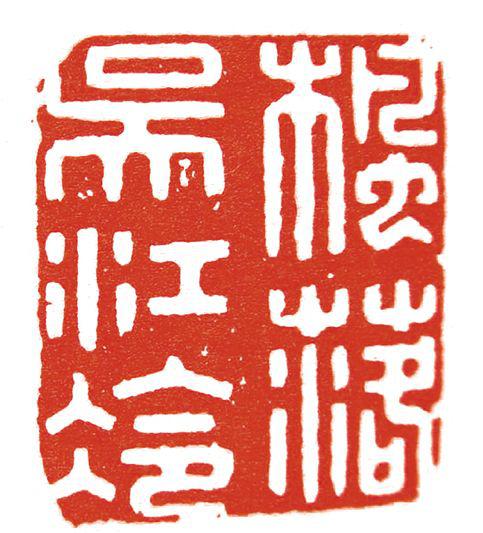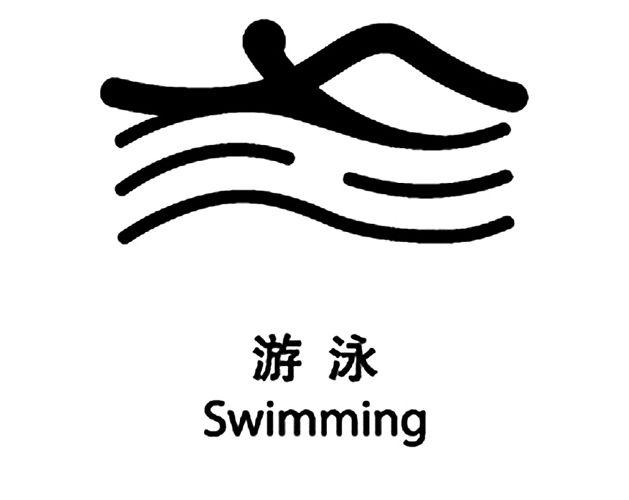





The numbers of Chinese language learners across the world have been on the rise in recent years. While those used to phonetic languages often find Chinese characters difficult to learn, some learners may experience the gratification of discovering historical and cultural elements in the process.
Some pictographic symbols of Chinese characters express people's keen observation and experience of the world. This is why some European poets have found Chinese characters inspiring to their imagination. Ezra Pound (1885-1972), for example, was well known for his admiration of Chinese characters, from which he was able to draw creativity. When he saw the character 旦 in the dictionary, he was reminded of the morning sun.
Pound's poetic allusions are not without basis. Take the character 旦, for example – the upper part is a sun symbol, while the lower part represents the horizon. In other words, the character indeed stands for "the sun rising on the horizon." The name of a famous university in Shanghai, Fudan, is composed of the characters 复 and 旦. Taken from a line from the classic, Great Comments on the Book of Documents ( Shangshu dazhuan ), meaning, "The sun and moon rise day after day," the characters were chosen to encourage students to learn new knowledge every day.

An oracle bone unearthed in Anyang, Henan Province
A number of characters containing 日 as an element all relate to the rising or setting of the sun. For example, the original complex form of the character for "east," 东, looks like the sun rising from a forest. One of the complex forms of the character for the "morning sun" is written as
 . The left part consists of the symbols for "sun" and "grass." The right part is the symbol for "river." The character means "the morning sun rising and shining over the flowing river." The character 暮 was originally written as 莫, resembling a scene of the sun setting into a forest. The left part of the character 明 was originally the symbol for "window," while the right part stands for "moon." Thus, 明 depicts a scene of the moon shining through the window. Is this not a poetic conception? The complex character for "beauty" is written as 丽. It resembles two deer running side by side on a mountain. A beautiful scene, is it not?
. The left part consists of the symbols for "sun" and "grass." The right part is the symbol for "river." The character means "the morning sun rising and shining over the flowing river." The character 暮 was originally written as 莫, resembling a scene of the sun setting into a forest. The left part of the character 明 was originally the symbol for "window," while the right part stands for "moon." Thus, 明 depicts a scene of the moon shining through the window. Is this not a poetic conception? The complex character for "beauty" is written as 丽. It resembles two deer running side by side on a mountain. A beautiful scene, is it not?

A copy of stone-drum inscriptions, dating back to the Warring States Period, by Wu Changshuo (1844-1927), Qing Dynasty
The 2008 Olympics Games has adopted a set of symbols to represent the beauty of Chinese calligraphy. By combining certain features of different traditional forms of Chinese characters, the symbols appear both lively and highly representative of the sports they stand for.
Although Chinese is a pictographic language, it does not consist of language pictures. Early pictographic languages were mostly represented by language pictures, which imitated the external characteristics of things. For these languages, language symbols were not much different from pictures, as with the pictographic hieroglyphs of ancient Egypt.
At its beginning, Chinese also included language pictures, which became fewer and fewer during the period of the oracle-bone inscriptions. Most symbols were made up of simple lines. For example, the oracle-bone inscription for "dog" was written as 犬. Instead of a drawing, a few simple yet highly symbolic lines were used to depict the image of a dog.

Tomb tablet to Zhang Jing (official of unknown birth and death dates), inscribed with characters in official script, a style of calligraphy current in the Han Dynasty. This work later became one of the most popular models for students of calligraphy.
The calligraphic symbols for the Beijing Olympics were designed to represent the "Beauty of Seal Characters." A "seal character" is a type of Chinese calligraphy often carved on seals. There are two types of seal characters: the dazhuan , or greater seal, and the xiaozhuan , or lesser seal. The greater seal is also known as bronze inscription, because it was often used for carving inscriptions on bronzeware in ancient times. The lesser seal was the script the First Emperor of Qin (r. 246-210 BC) adopted for the whole country, when he united China in 221 BC. Based on and developed from the oracle-bone inscriptions, the seal characters feature smoother and rhythmic lines, and thus have a more appealing appearance.
This is the symbol for "swimming":

The upper part is a symbol for "person," while the lower part is a symbol for "water." The swimmer strokes the water with vigor, imparting a strong sense of motion. If we take a look at the seal character for "walk," 走, we make out a clear connection between the Olympic symbol and the character: the upper part for "swinging arms" and the lower part for "walking legs." The gentle and flowing lines in the lower part of the Olympic symbol are similar to the seal character for "water": 水.
This is the symbol for "track and field":

This symbol is aptly taken from the seal character for "dance":
 . The dancer slightly tilts his head to one side, leans his body forward, swings his arms back and forth, and lifts his legs in a running fashion. The symbol, athletic yet graceful, has also been adopted for the "triathlon" and "football."
. The dancer slightly tilts his head to one side, leans his body forward, swings his arms back and forth, and lifts his legs in a running fashion. The symbol, athletic yet graceful, has also been adopted for the "triathlon" and "football."
These symbols demonstrate how modern Olympics have revitalized the charm of the ancient Chinese language.